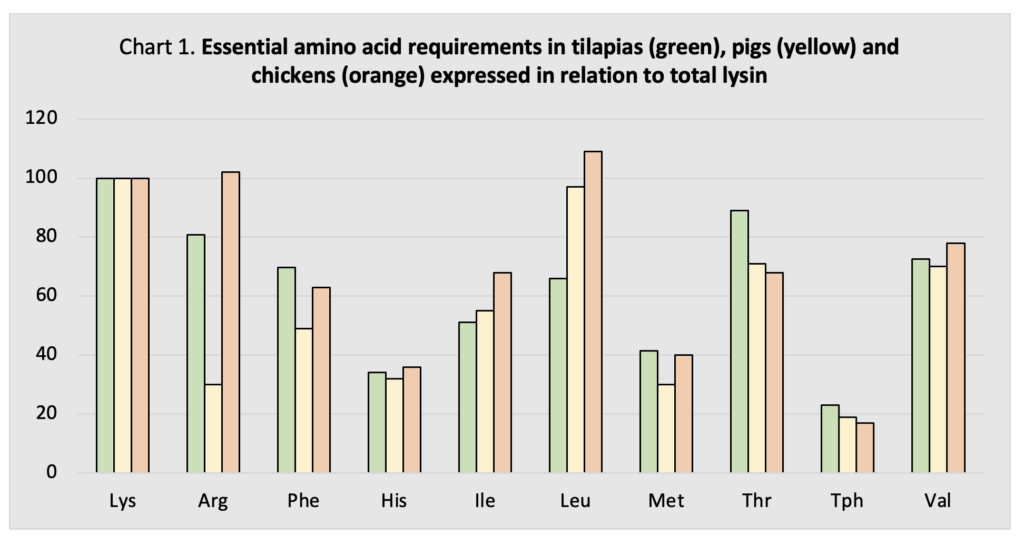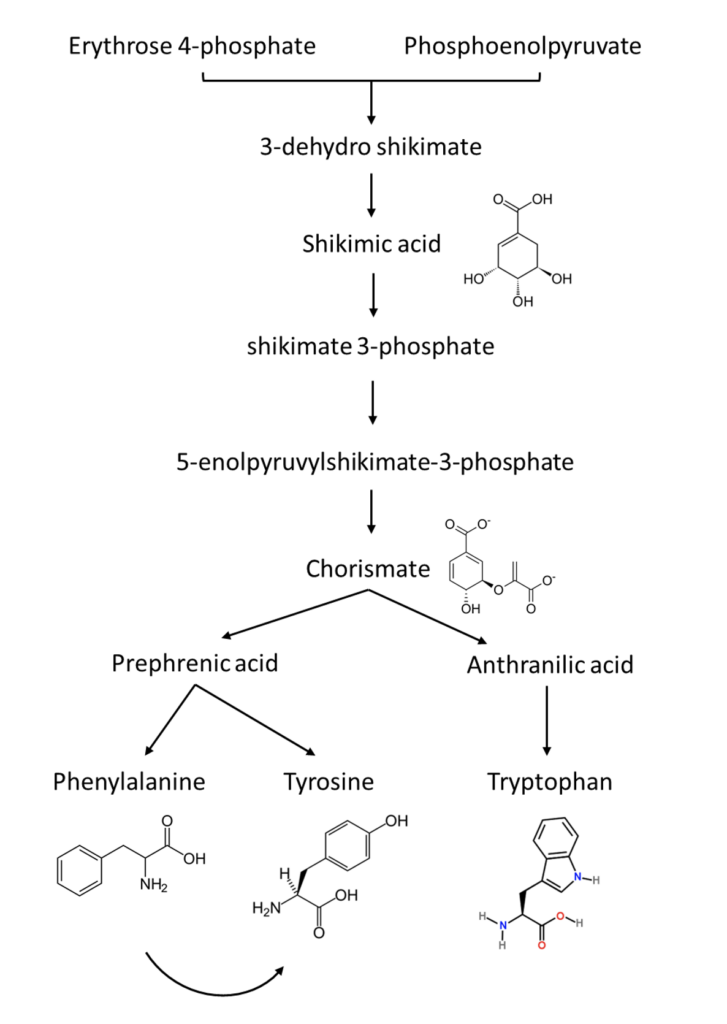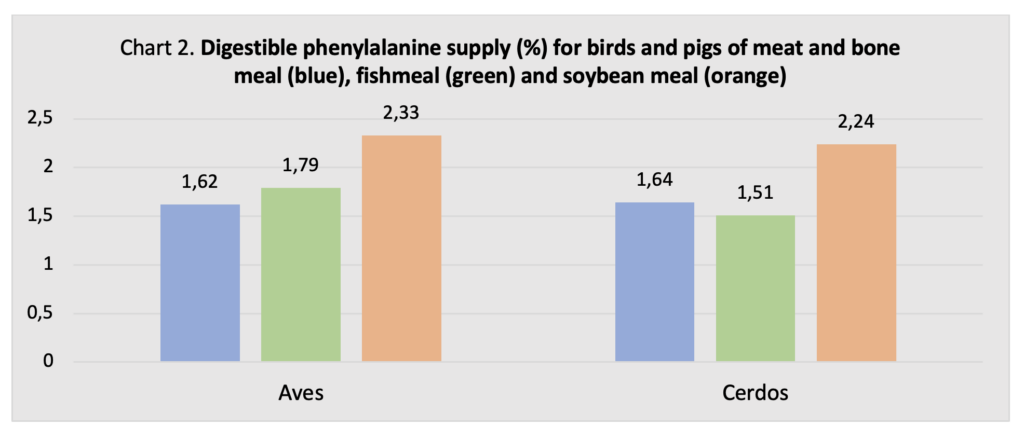Phenylalanine: an essential compound for the organism
Phenylalanine is an essential amino acid that is necessary for the synthesis of several compounds such as proteins, catecholamines (hormones such as adrenaline) and melanin. It is also a precursor of another amino acid, tyrosin, and an energy source [1].
It is an essential nutrient for animals, which means that they cannot synthesize them and need to obtain it from the diet.
Phenylalanine deficiencies cause growth stunt, loss of muscle mass and damage in different organs [1]. That is why it is so important to ensure a sufficient supply of this amino acid in the diet and, therefore, optimize performance results.

Lys = lysine; Arg = arginine; Phe = phenylalanine; His = histidine; Ile = isoleucine; Leu = leucine; Met = methionine; Thr = threonine; Tph = tryptophane; Val = valine. Requirements at the final growing stages. Sources: [2], [3]
Phenylalanine synthesis in plants
Phenylalanine is amongst the aromatic amino acids, together with tyrosine and tryptophan [4]. Despite the fact it is essential for animals, plants are capable of synthesizing it thanks to a biochemical route called shikimic acid route or shikimate route [4], [5]. In this route, many other aromatic compounds that are essential for the organism are synthesized, too, such as the pronutrients [5].

Fig. 1.Biosynthesis route of phenylalanine
Sources of phenylalanine
Phenylalanine can be found, mainly, in protein-rich ingredients. These can have an animal origin, such as plasma or meat and bone meal, or a vegetal one, such as soybean meal or rapeseed meal.

Aves = poultry; Cerdos = pigs. Crude protein content of 60% for MBM, 54% for fishmeal and 48% for soybean meal [2].
There are also synthetic phenylalanine sources, ingredients whose composition is mainly based on phenylalanine and aim to maximize the formula to meet the exact amino acid requirements.
This type of ingredients is necessary because, most of the times, diet’s amino acid profile does not exactly meet the animal requirements. Therefore, to avoid increasing protein levels in the diet to cover specific needs for a small group of amino acids, diets are adjusted with supplements or premixes that contain high concentrations of these essential compounds.
Formulation: choosing the best phenylalanine source
It is important to consider the real content of this amino acid in each of the ingredients and, particulalry, in the protein sources and raw materials that make up a high percentage of the formula, such as corn or other cereals.
With the aim to know the current amino acid profile of the ingredients, it is essential to analyze the raw materials, since they may differ from the levels expressed in standardized nutrient composition tables. The most widely used tool to perform these analyzes is the NIR (or near-infrared spectrophotometer).
Once we know the current amino acid content of raw materials and their price, the feed formulation programs can calculate the cost of each unit of phenylalanine. This way, they will choose ingredients or supplements with the lowest cost per unit of phenylalanine as the main source of this amino acid.
How can Delta Labs help you?
In Delta Labs, we offer the feed formulation and analysis service to optimize feed composition and adjust it to the requirements of the species, commercial breed, ages, and productive stages. We also support you in the analysis of raw materials and balanced feeds.
To use these services, please contact us through our webpage www.globalvetslab.com or email at info@globalvetslab.com
References
- [1] M. Kohlmeier, “Amino Acids and Nitrogen Compounds,” in Nutrient Metabolism. Food Science and Technology, 2003, pp. 314–321.
- [2] H. S. Rostagno et al., Tablas Brasileñas para Aves y Cerdos. Composición de Alimentos y Requerimientos Nutricionales, 4th ed. Universidad Federal de Viçosa, Departamento de Zootecnia, 2017.
- [3] A. T. Rodrigues et al., “Ideal profile of essential amino acids for Nile tilapia (Oreochromis niloticus) in the finishing growth phase,” Aquac. Res., vol. 51, no. 11, pp. 4724–4735, 2020.
- [4] R. Ferreira and ARN Teixeira, “Metabolism,” in Encyclopedia of Food Sciences and Nutrition (Second Edition), Academic Press, 2003, pp. 197–206.
- [5] J. Borrell, “Uso de pronutrientes de origen natural en veterinaria,” RACVE (Real Acad. Ciencias Vet. España), 2005.